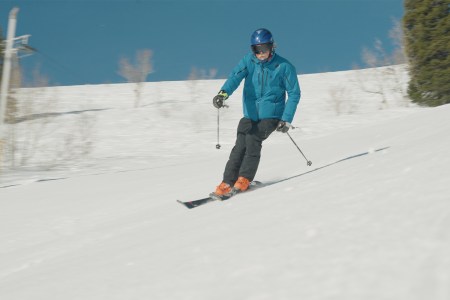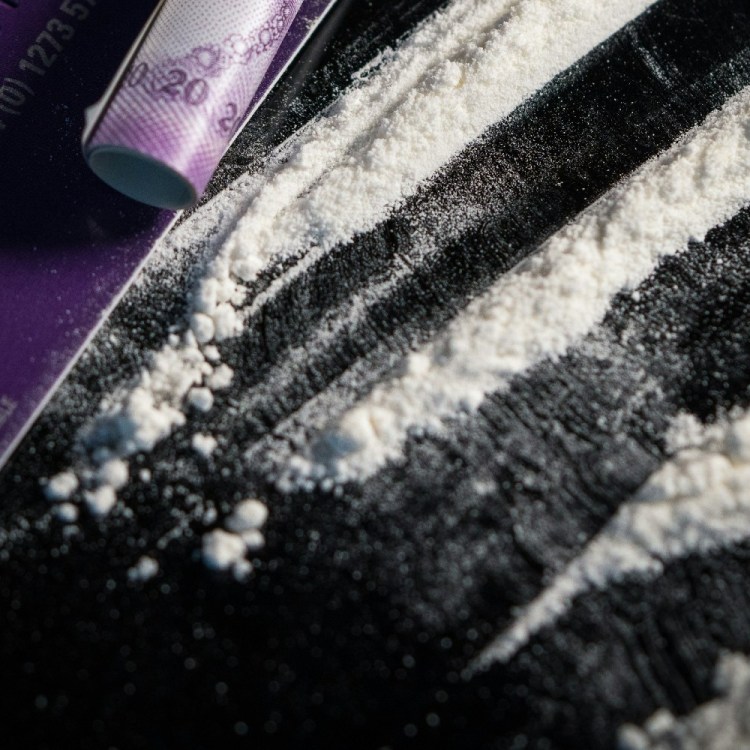To the untrained eye, it looked like 2016: Lindsey Vonn, one of the greatest ski racers of all time, hurtling down a course in full-send mode, her right knee an inch from the slope as she tucked through a turn, a contrail of snow dissipating in her wake. The untrained eye, of course, needs a little help.
In reality, the date was December 14, 2024, and Vonn, who turned 40 in October, was not in full-send mode. She was the “forerunner” for a women’s World Cup downhill race at Beaver Creek in Colorado — skiing hard for sure, but primarily serving to test the timing equipment and course conditions before the race started. The event, in which Vonn was not competing, held added significance as it would be the first time ever that women would race on the same daunting Birds of Prey course at Beaver Creek that the men’s field has run for years.
Forerunning a course is as close to the real deal as one can get, and for Vonn the run was another milestone in a remarkable return to racing five years after retiring and seven months after major surgery on her right knee. This accomplishment was not lost on the crowd of thousands packed into the finish area, who greeted Vonn as though she had just won Olympic gold, the clang of cowbells and wild applause filling the Rocky Mountain air.
A Return No One Saw Coming
Vonn’s comeback has triggered a range of strong reactions among longtime ski racers and coaches. Chief among them is the question of why a 40-year-old with nothing left to prove would return to the sport that shredded her knee multiple times and left her in chronic pain for more than a decade.
“There’s something in there that’s not fulfilled, and I don’t know what it is,” says Gary Miller, an Olympic alpine ski coach who has been around the sport since the 1970s. “In downhill, if you want to win, you’ve got to put your ass on the line and take some risks. Doing that with a titanium knee? One bad crash could make that a whole lot worse. It baffles me. What is there to gain?”
Women downhillers frequently exceed 80 mph and absorb significant force in their knees on courses that are basically solid ice. Technicians prepare the runs by injecting them with water — “using multiple nozzles to soak the course six to eight inches deep and then letting it freeze,” Miller says — which helps ensure consistency from race to race and reduces the severity of the ruts that have historically put racers in the bottom half of a heat at a disadvantage.
Meet “Racer Tom,” the 63-Year-Old Ski Resort Folk Hero
Thomas Hart amassed over seven million vertical feet at Snowbasin this season, and he’s not done yetWhat Is “Knee Resurfacing”?
The recent surgical procedure Vonn had was widely reported as a partial knee replacement, “but it should be called a ‘knee resurfacing’ because you’re not replacing anything, just putting a new metal surface on the top of the bone” where the cartilage is damaged, says Dr. Michael Banffy, chief of Sports Medicine at Cedars-Sinai in Los Angeles and the team physician for the Los Angeles Rams. In Vonn’s case, that meant two titanium caps — one each on the ends of the fibula and tibia — with a plastic spacer between them.
“The nice thing about this surgery is that [the patient] keeps all of the ligaments, including the cruciate ligaments — ACL and PCL — which are important for an athlete,” Banffy says. “We used to tell athletes who had a surgery like this that their professional career as they know it is over,” he adds, but with the precision of today’s surgical procedures, coupled with science-based rehabilitation, fitness and nutrition, such resurrections could become more common.
Most importantly, the surgery fully alleviated the chronic knee pain that had forced Vonn to retire in 2019. She suffered numerous injuries over her initial 19-year career, including a horrific crash at the 2013 world championships in Schladming, Austria, where she tore numerous ligaments and fractured her tibia. She had surgery to repair that damage and returned to racing — and winning — but, like so many post-repair athletes, never regained her pre-injury form.
Since her Beaver Creek appearance, Vonn has competed in 12 World Cup and World Championship races, with numerous top-20 finishes, including sixth in the downhill in St. Anton, Austria on January 11 and fourth in the super giant slalom the next day. She crashed during a training run in Cortina, Italy — where the 2026 Winter Olympic Games will be held and where Vonn has historically skied very well — but suffered only minor injuries. Right now, she appears to have two missions: to make the U.S. Olympic team and to prove her supporters right.

From Recovery to Results
“Lindsey is proving that she did the homework and that she has the fitness, and she’s placing top 15 in the world in World Cup races after being out five years, which is out of this flipping world,” says Deb Armstrong, a former U.S. Ski Team racer who won a gold medal in giant slalom in the 1984 Winter Games, and now runs a ski coaching YouTube channel. Armstrong also believes Vonn is bringing value to the team as a player-coach.
“The U.S. women’s downhill team hasn’t been this strong in a long time; they’re killing it,” says Armstrong, noting the four American women in the top 15 worldwide. “I have to believe some of that is due to Lindsey being there. She’s a competitor — clearly — but she’s also like an elder statesman, and that’s really cool to see.”
If Vonn is serving as a mentor to the team, Miller reckons it could pay significant dividends.
“I wanted to try the player-coach thing back in the 1980s on the men’s alpine team,” he says. “Some of our guys who weren’t going to win, instead of just casting them off, I thought we could keep them around to help younger guys. But I couldn’t get any traction. If that’s what Lindsey is doing, I’m all for it.”
The Bigger Picture
Across the pantheon of professional sports, hip surgeries have yielded the highest success rate for returning to competition, Banffy says. He cites Bo Jackson, who came back from major hip reconstruction surgery in 1993 to hit 16 home runs over 85 games for the Chicago White Sox, and a number of pro hockey players — including Washington Capitals’ center Nicklas Backstrom — who returned to play after multiple hip surgeries.
Something about the size and function of the hip might make it more resilient to surgery compared to, say, the shoulder of an MLB pitcher, Banffy says. “And similar with skiing perhaps: [Vonn] still has all her ligaments intact so this may be a sport that can accommodate the surgery and where she can continue to compete at a really high level.” Achieving and sustaining that, however, is very rare, he cautions.
Banffy adds that a surgically repaired knee will top out at “about 75 to 80%” of the strength of the knee that didn’t have surgery, but in Vonn’s case that disparity could be canceled out by the fact that she’s skiing pain-free for the first time since 2013. Vonn has said in numerous interviews that she feels better than she has in years, which in itself is a major psychological boost.
Regardless of how this comeback story ends, one thing is clear: we’ll see more like it. Athletes who once competed at the top of their sport often recount those days almost evangelically, and if science and technology offer a chance to recapture that magic, even briefly, many will find the temptation irresistible.
“Lindsey is the best female downhiller ever and has a mental edge about her and a clarity of conviction for going for something,” Armstrong says. “Those intangibles — none of us can have any idea of how powerful those are. Of course there’s risk, but she’s back and she’s getting top 15s now and very well could podium. She’s solidifying her legacy.”
The Charge will help you move better, think clearer and stay in the game longer. Subscribe to our wellness newsletter today.


























